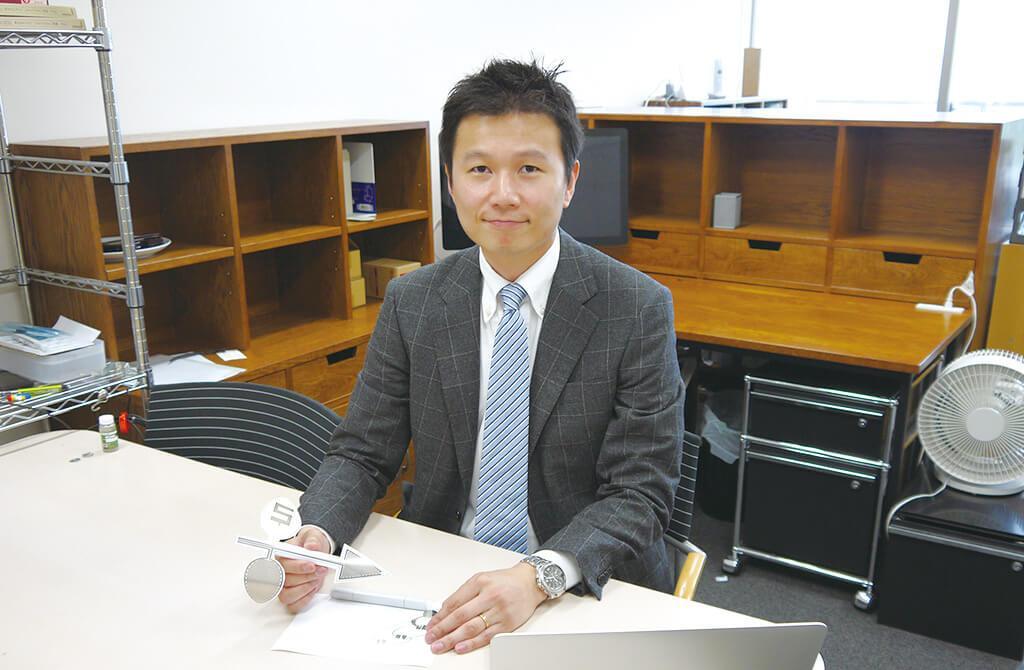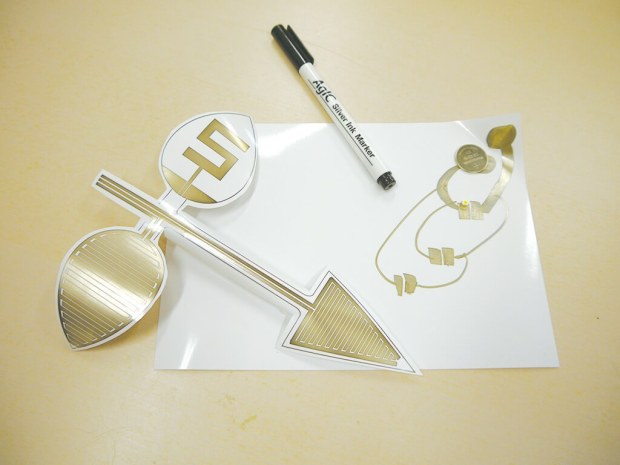- someone
- Information for Middle and High School Researchers
I want to create "convenience" that goes unnoticed Keihiro Kawahara
2015.07.14
Recently, computer-equipped glasses and wristwatches have begun to appear. In the future, everything from clothing to writing utensils will be equipped with computers. Using these devices, we may be able to point to an interesting advertisement and have detailed information downloaded to our smartphones. Such a future is just around the corner.
A world where things support people
Keihiro Kawahara of the University of Tokyo aims to realize "ubiquitous computing," a society in which computer-equipped objects are connected via networks to strongly support people's daily lives. The word "ubiquitous" means "ubiquitous. For example, when you stand in front of a state-of-the-art vending machine to buy a glass of juice, the recommended product is displayed. The sensor in the vending machine determines the gender and age of the purchaser, and presents the recommended product selected based on the time of day, temperature, and other conditions. In this way, if we can create a world in which network-connected objects can determine their surroundings and perform appropriate functions, people's lives will become richer and more fulfilling.
Printing" an electric circuit
To realize ubiquitous computing, it is important to accelerate research by making prototypes of computers and sensors quickly and inexpensively. The boards with electric circuits on them that are necessary for electronic devices are usually made by machines in a factory through a number of processes. While factory production is suitable for mass production of the same product, it is not suitable for laboratories that want to produce a small number of different types of prototypes quickly. Kawahara wondered if it would be possible to print circuit boards using a home-use inkjet printer. There have been electrically conductive "inks" in the past, but they could not be used properly in printers, or they could not be used just for printing and required additional processes. By using a special ink with silver particles that solves these problems, Kawahara was able to make it possible to print circuits on a printer. This technology allows him to easily make multiple prototypes and speed up his research.

A sensor that measures the moisture content of soil developed by Mr. Kawahara using ▲ circuit printing technology.
Creating new technologies by meeting people.
The printing technology for this circuit was born from an encounter. Mr. Kawahara had originally been conducting research using ink that was much more difficult to use than today's. A developer from a paper manufacturer noticed his research and asked if he could use the ink they had developed. A developer at a paper manufacturer, who was interested in his research, asked him if he could use the ink they had developed. The silver ink was a technology that had been quietly lying dormant in the company for some time. It was a perfect match for his circuit printing technology.
Meeting with people gives me ideas for research," says Kawahara. Using the circuit printing technology, Kawahara is now developing a sensor to measure soil moisture content. This was also born from an encounter with an agronomist. When a sensor printed on paper is inserted into the soil, it detects the amount of moisture in the soil by the change in the amount of electricity stored in the sensor. The sensor can also transmit information to a receiver, which tells it when to water the soil appropriately. On some farms, it is now known that the amount of water that was previously thought to be adequate may actually be too much.
Creating the norm 20 years from now
It takes about 20 years for a technology that has just sprouted to become widely used," says Kawahara. Even if computers are mounted on everything with circuit printing technology, there are still many technical issues to be solved, such as how to secure the power supply. It is necessary not only to improve the technology, but also to connect the technology with people to increase its usage. He is actively collaborating with entrepreneurs, and has already begun to introduce products developed with this technology to the world. Mr. Kawahara is trying to give shape to the technology he has created in the real world by meeting a variety of people. (Text: Yu Togane)
Yoshihiro Kawahara Profile
D. in 2005 from the Graduate School of Information Science and Technology, the University of Tokyo. D. in Information Science and Engineering. D. in Information Science and Technology from the Graduate School of Information Science and Technology, the University of Tokyo in 2005, and worked as a research assistant and assistant professor at the Graduate School of Information Science and Technology before becoming a lecturer in 2010. He has been a technical advisor to AgIC Corporation since 2014, a JST PRESTO researcher since 2014, and a technical advisor to SenSprout Inc. since 2015.
